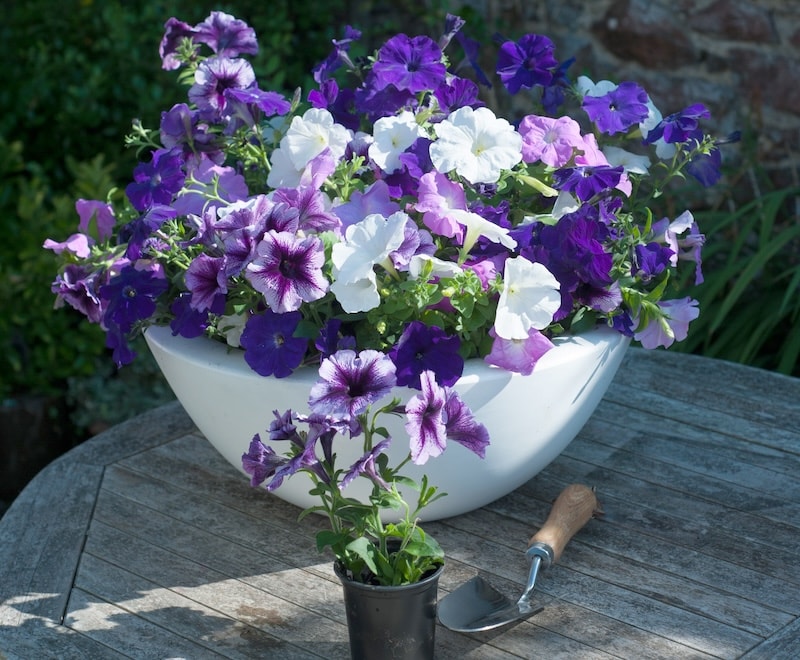Plug plants save time, space and money. They’re an economical back-up plan for failed sowings and guarantee a result for things that can be tricky to germinate at home. They also represent excellent value when compared to larger potted plants. If you want to start your flowers, herbs and vegetable plants from a mixture of different sized plugs, here are our top tips to help you achieve the very best results.
Browse our collection of garden ready plug plants to get started.
What is a plug plant?
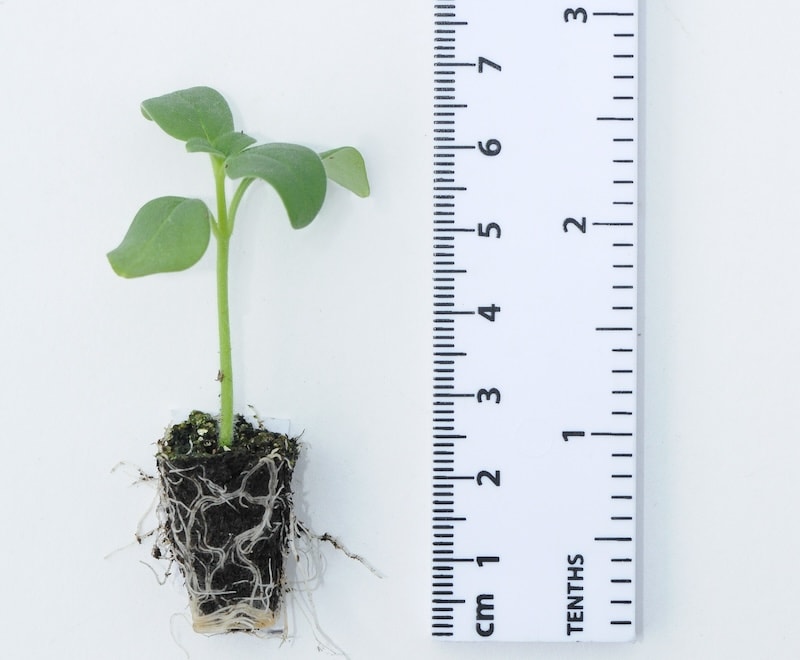
Image: Suttons (©Branded Garden Products)
A plug plant is a very young plant, annual or perennial, grown in a single cell with a small healthy root ball and young top growth. It’s a quick, easy and cost-effective way to source your favourite flowers and vegetables without sowing your own seed. For a deeper dive into why they might be right for you, read our ‘Why buy plug plants?’ article.
At Suttons, we supply our plug plants in four main sizes. Our garden ready plug plants are the largest, and require the least amount of care. The four sizes are:
- Plug plants. The cheapest and smallest plug size, (approximately 3 – 6cm) these plugs offer a great way to bulk order perennial and annual flowers for the garden. They’re usually available from early spring, giving you plenty of time to grow them on before planting out.
- Postiplugs. Another mini-plug, but a little more mature (approx. 5 – 9cm). They still fit inside a special postbox-friendly container and should be potted on until they’re big enough to plant out.
- Jumbo plugs. At approx. 5 – 11cm, these are a great option for planting straight into baskets and containers. Keep the displays under cover and harden off your plants before placing them outdoors in their final position.
- Garden ready plugs. This is our largest size of plug plant at approx. 10 – 15cm. Ready to plant into the garden straight after delivery, these garden ready plugs need the least amount of care when they arrive. Pop them straight into borders, container displays and the veggie patch.
Whatever size you choose, it’s important to hydrate your plug plants as soon as they’re delivered. Use a mist spray or gently pour water over the root balls to make sure the compost is fully rehydrated. You’ll find a helpful comparison of all the sizes we sell over at our plant sizes page, along with some simple growing instructions for each plug size on our blog.
What to do when your plug plants arrive

Video: @growsuttonsseeds YouTube Channel
As soon as your plug plants arrive, open the packaging and stand them up in their cells. They’ll need to breathe after their journey! Find a warm and bright spot, out of direct sunlight, so they don’t dry out or get scorched. Don’t worry if the stems are bent slightly, says our resident expert Rob Smith. This just shows where the little plugs searched for light in their container. As soon as you stand them up, they’ll start growing straight, he adds.
As soon as they’re up, carefully rehydrate the roots of your plug plants. After 24-hours or so, they’re ready to be potted on:
- Fill 9cm pots with peat-free compost and poke a generous hole into the surface.
- Lift the plugs into the hole, keeping them at the same depth as they were grown before. It’s important to handle them by a leaf or the root ball to avoid damage to the stem. Gently press the root ball into the new pot and backfill.
- Water your newly planted pots and move them to a bright spot like a greenhouse or windowsill to grow on.
- Label each pot as you go. It’s easier than you think to lose track!
For more tips, watch Rob’s short video where he demonstrates what he does with his tomato plug plants when they’re delivered.
How to grow on plug plants
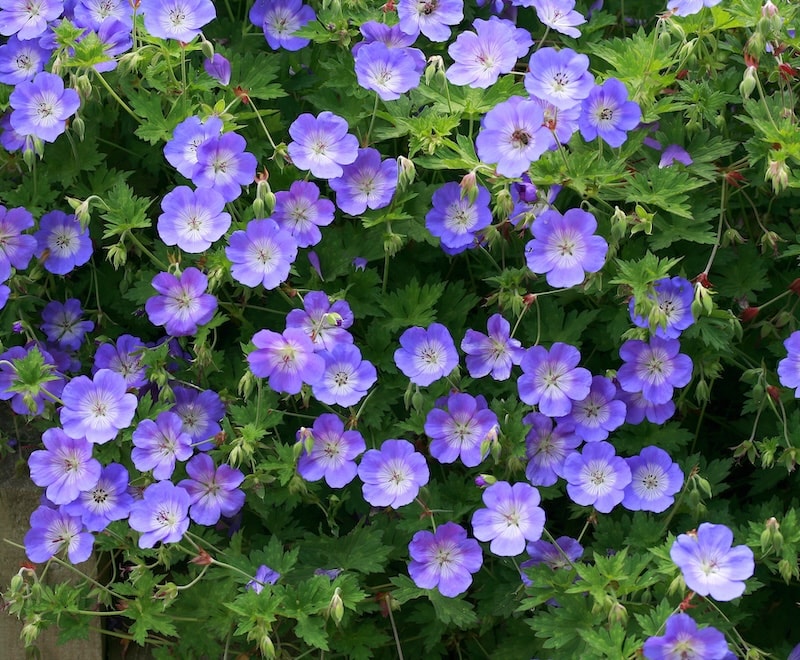
Image: Geranium ‘Rozanne’ from Suttons (©Photoshot)
Once you’ve moved your plugs into 9cm pots, grow them on under cover until they’re big enough to plant out. Smaller plug plants appreciate having time to develop really strong roots before they move into their final positions. Very small plugs will need a couple of months under cover, whereas garden ready plug plants can often go straight out, provided it’s warm enough.
You may need to pot on your plugs twice if you bought them very early in the season, but larger plugs may not need potting on again. Check underneath your pot to see if any of the roots are poking through. If there are, and there’s no longer any chance of frost, it’s time to harden them off to plant out. If the temperature isn’t quite warm enough where you live, move them into a slightly larger container to develop further.
Caring for plug plants

Image: Bamboo & Rice Pots and Saucers – Sage Green from Suttons (©Branded Garden Products)
Your plug plants prefer to have moist roots, but never allow their pots to sit in water or dry out. Place your pots in a drip tray to maintain a humid environment around the roots and save excess water from running away and being wasted.
If you notice a slight yellowing of the leaves, or if growth slows down, use a well-diluted, balanced liquid feed like Growmore to give them a boost. The longer your plugs are in pots, the more they’ll appreciate a supplementary feed every couple of weeks.
Once the threat of frost has passed, it’s time to start thinking about hardening-off your plug plants. Place your plugs outside during the daytime and bring them inside again overnight for two weeks to toughen them up. A coldframe is really useful here; simply place your young plants inside so you can open the top in the day and close it at night.
Planting out flower plug plants
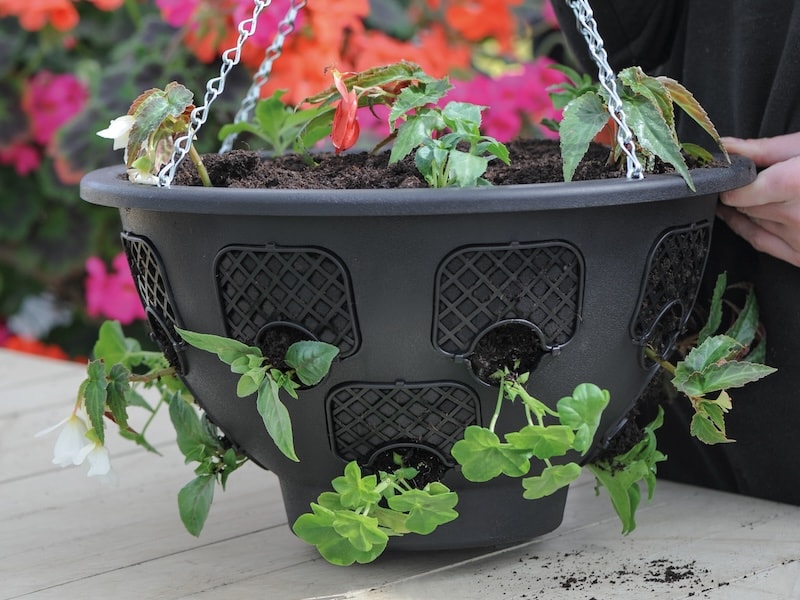
Image: Hanging Baskets from Suttons (©Branded Garden Products)
If you’ve been nurturing flowers for the garden, it’s exciting when they’re ready for their final positions. May and June are good months to plant out your flowers.
Annual plug plants like begonia, bacopa and petunia are ideal for hanging baskets where their trailing stems, bright colours and pretty blooms can be admired from below. There are several different types of basket to choose from, so take a moment to work out which hanging basket is best, before you begin. Pack your plug plants tightly into your basket to create a thick, bushy display. Then, at the end of summer, switch to winter mode with hardy bellis, pansies, violas and trailing ivy.
Annual flowers are also useful in borders where they fill unsightly gaps between slower-starting perennials. But the real stars are the perennial border plants like hardy geraniums, coreopsis and osteospermums that perform year after year. Perennial plug plant collections are a great way to fill a garden quickly. If you need a little bit of inspiration, here are some easy flower plants to grow for beginners.
And if you want to brighten up your patio and fill your containers with colour, garden ready plug plants will transform your outside space overnight. Whether you stick to a single colour theme or love an eclectic riot, have fun creating a gorgeous seating area filled with pretty petals, interesting foliage and intense fragrance.
Planting out vegetable plug plants
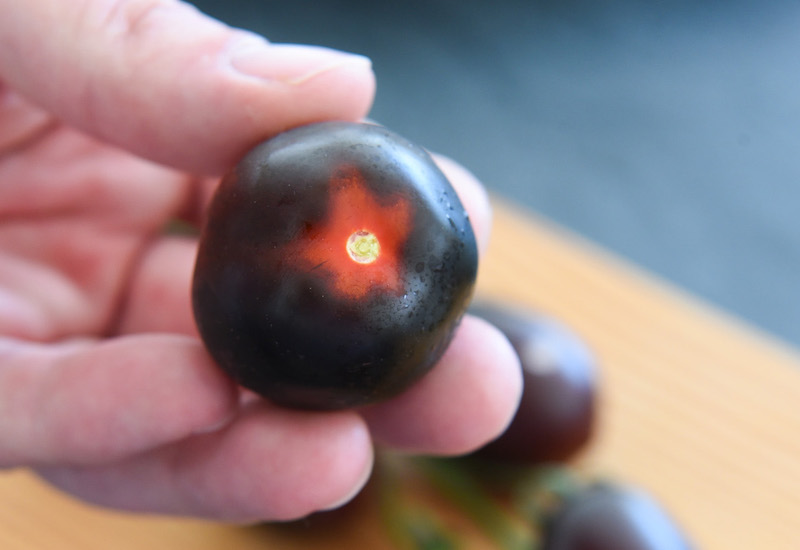
Image: Tomato ‘Nightshade’ from Suttons (©Branded Garden Products)
Some vegetables need a very long season to grow and ripen, including hothouse favourites like beefsteak tomatoes, aubergines and spicy chilli peppers. Ordering these as plug plants gives you a really strong head start. They also make a great back-up if your seeds fail, for any reason. Another good reason to buy vegetable plug plants is that some things, like the new Brussels Sprout ‘Red Darling’, are not yet available as seed.
Growing vegetables from plug plants is a quick way to fill your plot, and a good alternative for those who don’t have the time or space to sow seeds. If you’ve been growing your smaller plugs on under cover until the weather improves, make sure you harden them off before planting them out. But garden-ready vegetable plug plants can usually go straight into pre-prepared beds, provided the soil is warm enough. You might like to warm the soil with a layer of cardboard or black plastic for a few days first, to get them off to a flying start. Our article on growing brassicas from plug plants has more helpful tips.
If you have a balcony or a small rented garden, you may need to grow your fruit and vegetables in containers. In this scenario, vegetable plug plants make a lot of sense. You can even pop things like kale, herbs, tomatoes and strawberries straight into grow bags.
We hope this gives you more confidence to try using plug plants in your garden. Let us know how you get on by sharing images over at Instagram, X and Facebook.
Image: Petunia ‘Frenzy Grand Rapids’ from Suttons (©Thompson & Morgan)
Last Updated on October 27, 2025 by Suttons Horticultural Team

